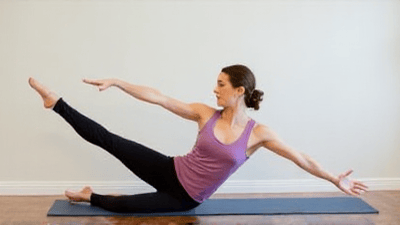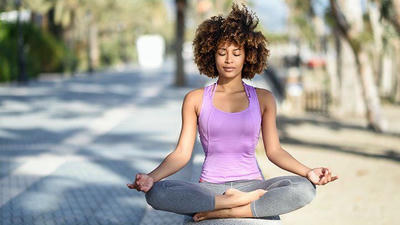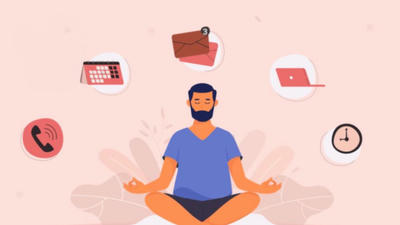
Yoga is an ancient practice that harmonizes the body, mind, and spirit. It has gained immense popularity in recent years, not just as a form of exercise but as a holistic approach to well-being. For beginners, starting a yoga practice can seem daunting, but incorporating simple poses into your daily routine can yield remarkable health benefits.
Understanding the Basics of Yoga
Before we explore the poses, it is important to understand the fundamentals of yoga.
What is Yoga?
Yoga is a discipline that originated in India over 5,000 years ago. It encompasses various physical postures (asanas), breathing techniques (pranayama), meditation, and philosophical teachings aimed at promoting physical health, mental clarity, and spiritual growth. The word "yoga" comes from the Sanskrit word "yuj," which means to unite or join. Consequently, yoga aims to unite the body, mind, and spirit.
Different Styles of Yoga
There are various styles of yoga, each offering unique benefits. Some common styles include:
- Hatha Yoga: A gentle introduction to yoga, focusing on basic poses and relaxation.
- Vinyasa Yoga: A more dynamic style linking breath with movement, emphasizing flow and transitions.
- Ashtanga Yoga: A rigorous style that follows a set sequence of poses, requiring strength and endurance.
- Yin Yoga: A slow-paced style that involves holding poses for longer periods to promote deep stretching and relaxation.
- Restorative Yoga: A calming style that uses props to support the body in restful poses, encouraging relaxation and recovery.
For beginners, Hatha or Vinyasa yoga is a great starting point, as these styles provide a balanced approach to learning foundational poses.
Health Benefits of Yoga
Yoga offers a multitude of physical, mental, and emotional benefits. Some of the key benefits include:
1. Improved Flexibility
One of the most noticeable benefits of yoga is increased flexibility. Over time, regular practice allows your muscles to elongate, reducing stiffness and tension in the body. Improved flexibility can also enhance performance in other physical activities, preventing injuries.
2. Increased Strength
Many yoga poses require the engagement of multiple muscle groups, helping to build overall strength. This resistance training effect can improve muscle tone and increase metabolic rate.
3. Better Posture
Yoga encourages awareness of body alignment and posture. Through regular practice, you can correct poor posture habits, which can alleviate pain and discomfort associated with prolonged sitting or standing.
4. Enhanced Balance
Yoga poses often involve balancing on one foot or holding challenging positions. This practice improves your overall balance and coordination, which is especially important as you age.
5. Stress Relief
Yoga promotes relaxation through deep breathing and mindfulness, reducing stress levels. This calming effect can help alleviate anxiety, improve mood, and enhance overall mental well-being.
6. Better Sleep
Regular yoga practice is associated with improved sleep quality. The relaxation techniques and mindful breathing can help ease tension, making it easier to fall asleep and stay asleep.
7. Enhanced Mind-Body Connection
Yoga encourages mindfulness through breath awareness and concentration on the present moment. This enhanced mind-body connection can improve self-awareness and promote a more positive outlook on life.
8. Improved Circulation
Certain yoga poses promote blood flow and circulation, which can help boost cardiovascular health. Improved circulation delivers oxygen and nutrients to cells more efficiently.
9. Support for Digestive Health
Gentle yoga poses can aid digestion by massaging the internal organs and improving circulation in the digestive system.
Getting Started with Yoga
Before you begin your yoga practice, it's important to prepare yourself physically and mentally.
1. Choose the Right Space
Find a quiet, comfortable space where you can practice without distractions. Ensure you have enough room to move freely. Consider using a yoga mat to provide cushioning and grip.
2. Wear Comfortable Clothing
Opt for flexible and breathable clothing that allows for a full range of motion. Avoid clothing that restricts your movements or makes you uncomfortable during practice.
3. Gather Props
While many yoga poses can be performed without props, beginners may benefit from using tools such as:
- Yoga Blocks: Helpful for support in poses where flexibility might be a challenge.
- Yoga Strap: Assists in stretching further and maintaining alignment.
- Blanket: Used for extra cushioning or support in seated poses.
4. Set an Intention
Before starting your practice, take a moment to set an intention. This could be something simple, like "I want to feel more relaxed," or "I aim to improve my flexibility." Setting an intention can help guide your practice and keep you focused.
5. Practice Mindful Breathing
Breath is a fundamental aspect of yoga. Begin by practicing deep, mindful breathing. Inhale deeply through your nose, allowing your belly to rise, and exhale slowly through your mouth. This technique will help ground you and prepare your body for movement.

Simple Yoga Poses for Beginners
Now that you have a foundation in yoga, let's explore some simple poses that are perfect for beginners. Each pose has its own unique benefits, making them a great addition to your practice.
1. Mountain Pose (Tadasana)
Benefits: Improves posture, balance, and body awareness.
How to Do It:
- Stand with your feet together, toes touching, and heels slightly apart.
- Distribute your weight evenly across both feet.
- Engage your thigh muscles and lift your chest.
- Relax your shoulders and let your arms hang by your sides.
- Take a few deep breaths, grounding yourself in the present moment.
2. Downward Facing Dog (Adho Mukha Svanasana)
Benefits: Stretches the hamstrings, calves, and spine; strengthens the arms and shoulders.
How to Do It:
- Start on your hands and knees, with your wrists aligned under your shoulders and knees under your hips.
- Tuck your toes under and lift your hips toward the ceiling, straightening your legs and creating an inverted "V" shape.
- Press your heels toward the ground and extend your spine, keeping your head between your arms.
- Hold for five deep breaths.
3. Warrior I (Virabhadrasana I)
Benefits: Strengthens the legs, opens the hips and chest; enhances focus and determination.
How to Do It:
- From Mountain Pose, step your left foot back about 3 to 4 feet.
- Bend your right knee over your right ankle while keeping your left leg straight.
- Lift your arms overhead, keeping your palms facing each other.
- Press firmly into the ground with both feet, and hold for five breaths.
- Switch sides.
4. Child’s Pose (Balasana)
Benefits: Gently stretches the hips, thighs, and lower back; promotes relaxation.
How to Do It:
- Kneel on the mat with your big toes touching and knees hip-width apart.
- Sit back on your heels and fold forward, extending your arms in front of you or resting them by your sides.
- Relax your forehead on the mat, and take deep breaths in this restful position for several breaths.
5. Cat-Cow Stretch (Marjaryasana-Bitilasana)
Benefits: Increases spinal flexibility, relieves tension, and improves posture.
How to Do It:
- Start on your hands and knees in a tabletop position.
- Inhale, arch your back, and lift your head and tailbone toward the ceiling (Cow Pose).
- Exhale, round your back, tuck your chin to your chest, and draw your belly button toward your spine (Cat Pose).
- Alternate between these two poses for several breaths.
6. Seated Forward Bend (Paschimottanasana)
Benefits: Stretches the spine, hamstrings, and shoulders; calms the mind.
How to Do It:
- Sit on the floor with your legs extended in front of you.
- Inhale and lengthen your spine, reaching your arms overhead.
- Exhale and hinge at your hips to fold forward, reaching for your feet or shins.
- Keep your spine straight as you breathe deeply, holding the stretch for several breaths.
7. Bridge Pose (Setu Bandhasana)
Benefits: Strengthens the back, glutes, and legs; opens the chest and hip flexors.
How to Do It:
- Lie on your back with your knees bent and feet flat on the floor, hip-width apart.
- Press your arms into the mat by your sides, palms facing down.
- Inhale and lift your hips off the ground, engaging your glutes.
- Hold for several breaths, then lower your hips back down.
8. Corpse Pose (Savasana)
Benefits: Promotes relaxation, reduces stress, and integrates the benefits of your practice.
How to Do It:
- Lie on your back with your legs extended, arms relaxed by your sides.
- Close your eyes and take deep breaths, allowing your body to relax completely.
- Stay in this position for several minutes, focusing on your breath and letting go of any tension.
Creating a Beginner Yoga Routine
To start your yoga journey, consider creating a simple routine incorporating the poses outlined above. Here is a sample routine that takes around 30 minutes:
- Mountain Pose - 5 breaths
- Downward Facing Dog - 5 breaths
- Warrior I - 5 breaths on each side
- Child’s Pose - 5 breaths
- Cat-Cow Stretch - 5 rounds
- Seated Forward Bend - 5 breaths
- Bridge Pose - 5 breaths
- Corpse Pose - 5 minutes
Tips for Your Practice
- Listen to Your Body: Yoga should feel good. If a pose causes pain or discomfort, adjust your position or skip it altogether.
- Be Patient: Progress in yoga takes time. Celebrate small victories and enjoy the journey.
- Practice Regularly: Aim for consistency. Even a short daily practice can yield significant benefits.
- Explore Different Styles: Once you're comfortable with the basics, consider trying different styles of yoga to find what resonates with you.
- Join a Class: If possible, take a beginner class with a certified instructor. This can provide valuable guidance and help you learn proper alignment.
Conclusion
Yoga is a transformative practice that can significantly improve your physical, mental, and emotional health. By incorporating simple poses into your routine, you can cultivate both strength and flexibility while promoting relaxation and mindfulness. Remember, the journey of yoga is unique to each individual, so take your time to explore and grow in your practice. With dedication and consistency, you will experience the many benefits of yoga and find a deeper connection with yourself.



